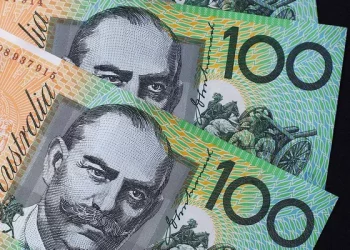Currency pegging is a mechanism used by countries to stabilize their currency’s value by attaching, or pegging, it to another major currency such as the US Dollar (USD) or the Euro. This approach helps reduce exchange rate volatility and provides a predictable environment for international trade and investment. Pegging can be done in various ways, including fixed pegs, crawling pegs, and currency bands.
Countries choose to peg their currencies to ensure economic stability, curb inflation, attract foreign investment, or maintain export competitiveness. However, pegging also involves challenges such as loss of monetary policy autonomy and vulnerability to external shocks. The type and degree of a peg can vary significantly, influencing how a nation navigates global financial markets.
The Evolution of the Thai Baht
The Thai Baht (THB) has a long history that reflects the broader economic and political transformations in Thailand. Initially, Thailand adopted a silver standard in the late 19th century. By the mid-20th century, the country had moved to a fixed exchange rate system, pegging the Baht to the US Dollar.
This fixed regime helped stabilize the economy during its early development stages. However, as global economic dynamics evolved, especially during the 1980s and 1990s, Thailand began to experience economic pressures that tested the sustainability of a hard peg. The most notable consequence was seen during the Asian Financial Crisis in 1997.
The 1997 Asian Financial Crisis and Its Impact
Prior to the crisis, the Thai Baht was pegged to a basket of currencies, with a strong focus on the US Dollar. As capital inflows surged, the Thai economy expanded rapidly, but vulnerabilities accumulated, particularly in the financial and real estate sectors. The fixed exchange rate started to appear increasingly unsustainable.
When speculative attacks intensified in 1997, the Bank of Thailand was forced to abandon the peg, allowing the Baht to float freely. This resulted in a dramatic depreciation of the currency, which fell from about 25 THB/USD to over 50 THB/USD within months. The crisis had deep economic and social impacts and reshaped Thailand’s approach to monetary policy.
Current Exchange Rate Regime in Thailand
Today, the Thai Baht operates under a managed float system, which means the currency is primarily determined by market forces but is subject to occasional intervention by the Bank of Thailand (BOT) to prevent excessive volatility. This system offers a balance between flexibility and stability.
The BOT monitors exchange rate movements and intervenes when necessary to maintain orderly market conditions. This approach allows Thailand to respond to both domestic and international economic developments while avoiding the rigid constraints of a fixed peg. It’s a pragmatic response shaped by past experiences, especially the lessons learned from 1997.
Is the Thai Baht Pegged Today?
In simple terms, no—the Thai Baht is not pegged to any specific currency today. While it was pegged in the past, Thailand currently employs a managed float regime. This means that while the Baht’s value is influenced by supply and demand dynamics in the foreign exchange market, the central bank can intervene as needed.
This system offers greater flexibility compared to a traditional peg. It helps the country adjust to changing economic conditions and external shocks. However, this also means that the Baht can experience more volatility compared to currencies that are strictly pegged to another currency.
The Role of the Bank of Thailand
The Bank of Thailand plays a central role in overseeing the country’s exchange rate policy. Through its monetary policy committee, the BOT sets the policy interest rate, manages foreign reserves, and intervenes in currency markets when necessary. Its primary objectives include maintaining price stability, supporting sustainable economic growth, and ensuring financial system stability.
When intervening in currency markets, the BOT generally aims to curb excessive volatility rather than target a specific exchange rate level. It uses tools such as foreign exchange swaps, interest rate adjustments, and direct market operations to influence market behavior and preserve economic stability.
Reasons Behind the Managed Float System
Thailand’s decision to adopt a managed float system is grounded in its economic needs and experiences. Here are several reasons for this choice:
- Flexibility: Allows the Baht to adjust to external shocks such as changes in oil prices, US interest rate hikes, or global financial instability.
- Inflation Control: Gives the BOT tools to manage inflation without being constrained by the need to defend a fixed exchange rate.
- Export Competitiveness: Prevents the Baht from becoming overvalued, which can hurt exports.
- Crisis Prevention: Helps avoid speculative attacks that are more common under fixed or tightly managed pegs.
The managed float system strikes a balance between autonomy and stability, enabling Thailand to pursue independent monetary policies while maintaining investor confidence.
Currency Peg vs. Managed Float: Key Differences
Understanding the difference between a pegged exchange rate and a managed float is crucial for grasping Thailand’s policy stance:
- Currency Peg: Involves fixing the exchange rate of the local currency to another currency or basket of currencies. The central bank must intervene constantly to maintain the peg.
- Managed Float: The exchange rate is determined by the market but may be influenced by central bank actions to smooth out volatility or address misalignments.
In a peg, policy autonomy is limited because interest rates must align with the anchor currency’s policy. In contrast, a managed float allows greater domestic control over monetary policy.
Benefits of Thailand’s Current System
Thailand’s managed float regime has yielded several advantages:
- Resilience: The economy is better positioned to handle global shocks such as financial crises or pandemic-induced slowdowns.
- Policy Flexibility: The central bank can use interest rate policy to address domestic conditions without being tethered to an external anchor.
- Market Confidence: Transparent communication and sound economic fundamentals have fostered confidence among investors and market participants.
These benefits have helped Thailand maintain relatively stable economic growth and low inflation, even amid global uncertainties.
Challenges and Criticisms
Despite its benefits, the managed float system is not without challenges:
- Volatility: Exchange rates can fluctuate significantly, affecting exporters and importers.
- Speculation Risk: Although less vulnerable than a fixed peg, the system is still susceptible to speculative capital flows.
- Perceived Manipulation: At times, foreign governments and institutions have accused Thailand of manipulating its currency to gain trade advantages.
To mitigate these concerns, the BOT emphasizes transparency and consistent policy actions aligned with macroeconomic fundamentals.
The Thai Baht in the Global Context
Thailand is a significant player in Southeast Asia, and the Baht is one of the more actively traded emerging market currencies. Its role in regional trade and investment flows means that changes in the Baht’s value can have regional ripple effects.
Additionally, Thailand’s large tourism sector and export-driven economy make its currency sensitive to global economic conditions. As such, the BOT’s ability to maintain a stable and competitive exchange rate is critical for long-term economic planning.
Conclusion
The Thai Baht is not pegged but instead follows a managed float exchange rate regime. This system reflects the country’s pragmatic approach to balancing the benefits of market-driven currency valuation with the need for occasional central bank intervention. Learning from the harsh lessons of the 1997 financial crisis, Thailand has embraced a more flexible and responsive monetary framework.
While not without its challenges, this approach has allowed the Thai economy to remain relatively stable in the face of global uncertainties. Understanding the structure and rationale of Thailand’s exchange rate system is essential for investors, policy analysts, and businesses engaged with the Thai market.
In conclusion, Thailand’s experience offers valuable insights into how emerging markets can navigate the complexities of exchange rate management in a globalized world.
FAQs
1. Is the Thai Baht pegged to the US Dollar?
No. The Thai Baht is not currently pegged to the US Dollar. It operates under a managed float system where the value is influenced by market forces, with periodic interventions by the Bank of Thailand.
2. Why did Thailand abandon the currency peg?
Thailand abandoned its currency peg in 1997 due to mounting speculative attacks and unsustainable economic conditions. The peg was replaced with a managed float to provide greater flexibility and resilience.
3. How does the Bank of Thailand manage currency fluctuations?
The Bank of Thailand uses tools such as interest rate policy, foreign reserve management, and occasional market intervention to stabilize the currency and reduce excessive volatility.
4. Can Thailand return to a currency peg?
While technically possible, returning to a peg would likely constrain Thailand’s monetary policy autonomy and expose the economy to greater risks. It is not considered a viable option given the current economic structure and global financial environment.
5. How does the managed float benefit Thailand?
The managed float system offers flexibility to respond to economic changes, supports inflation control, and helps maintain competitiveness in exports, contributing to overall macroeconomic stability.
Related Topics:

























